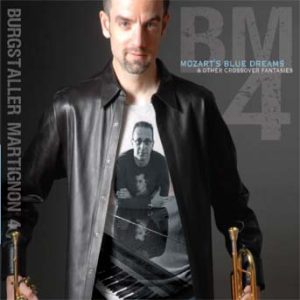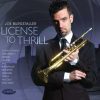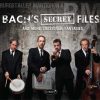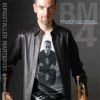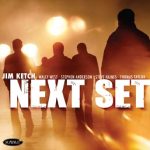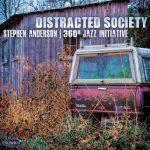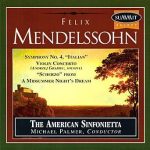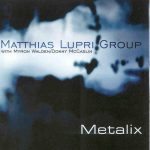Mozart’s Blue Dreams and Other Crossover Fantasies – Burgstaller Martignon 4
Incredibly played, fun outing led by trumpet player Joe Burgstaller and the exceptional piano wizardy of Grammy and Oscar-nominated Hector Martignon. A fabulous crossover recording from a tight, brilliant quartet
—–
REVIEW:
Burgstaller Martignon 4 – Mozart’s Blue Dreams & Other Crossover Fantasies – Summit Records DCD 520, 61:31 *****
(Joe Burgstaller – trumpet, flugelhorn, cornet; Hector Martignon – piano; Hans Glawisching – double bass; John Ferrari – drums, vibraphone)
The jazz community has a sustained collaborative history with classical music. Composers like John Lewis, Claude Bolling, Maurice Ravel, Dmitri Shostakovich, George Gershwin, Leonard Bernstein and many others have incorporated both disciplines. Many jazz artists like Art Tatum, Nina Simone, Miles Davis and Yusef Lateef delved into classical influences in their performances. Trumpeter Joe Burgstaller is a current artist in that tradition. With pianist Hector Martingnon, he released an album of classically inspired jazz, Mozart’s Blue Dreams & Other Crossover Fantasies. Nearly a decade after its release, it is a significant achievement.
The opening title track is based on “Piano Sonata No. 11 in A major”. The first movement is a swinging rendition of Mozart’a iconic “Rondo All Turca”. Burgstaller begins with a spirited high-energy trumpet run as the familiar takes on an up tempo jazz feel. Hector Martignon injects a bluesy low-down vibe on piano. Burgstaller answers with another bristling, unyielding solo. On the next piano improvisation, Martignon cuts loose with bop-like fury. Then a nasty shrilled trumpet precedes the big finish. Drummer John Ferrari and double bassist Hans Glawisching keep pace nicely. “Straight Ahead” (Variation 1)” is a delightful minute of a Martignon classical interlude. Switching back to jazz, “Mozart…Busted’ is finger-snapping with a muted trumpet and a piano trio in lockstep, although Martiunen has two nimble solos. He is joined by Ferrari on vibraphone for a brief restrained duet. “Theme” may be the most recognized minuet by Mozart. Martinen and Ferrari handle the first bars of this accessible, stirring melody. Burgstaller seamlessly joins at 0:53 with a mellow glow. As the arrangement progresses, there is a deft rhythmic shift to waltz-time that is stellar. Martinen adds some jazzy licks as well.
In a symmetrical combination, Chopin’s “Prelude No. 4” is paired with Antonio Carlos Jobim’s “Insensatez” (which was based on that prelude). The haunting classical refrain that inhabits this Chopin piece is started on piano and then joined by trumpet. At 1:20 the anticipated segue into Jobim is seductive and inhabits the lilting bossa nova tempo. Both soloists embrace the Brazilian sentiment and eventually return to the Chopin melody. Burgstaller pulls out the sultry essence of Duke Ellington (with a dose of Cab Calloway) on “Echoes Of Harlem”. Martignon’s elegant piano runs underscore the balance of uptown sophistication and cool grooves that define one of the greatest American composers. Chick Corea’s Children’s Songs has been a staple of classical/jazz fusion. In that spirit, three pieces are performed with varying styles. On “No 1” an ethereal (with a hint of dissonance) duet of flugelhorn and vibes is infused with emotion and a pulse. They are joined by piano on “No.4” as an uncanny cross-rhythm is established. In a striking acceleration, “No. 7” highlights the complex timing of Corea.
Claude Bolling is renowned for his intermingling of classical and jazz genres. The Suite For Flute And Jazz Piano Trio with Jean-Pierre Rampal was a critical and commercial success. His Toot Suite For Trumpet And Jazz Piano is a major component of this album. The soaring “allegro’ movement is the epitome of Baroque and jazz breeziness. The 3/4 time signature and structural potency is compelling. Burgstaller and Martignon transition back and forth across the dueling genres with suppleness and intensity. “Mystique” captures the brooding texture of the original with horn trilling and a bowed double bass. There is a subtle transition to a swaying and at times dramatic crescendo with a memorable conclusion. “Rag Polka’ is playful and full of different hooks. On “Vesperate’ the classical meditative integrity is maintained. The addition of the occasional muted trumpet gives the jam a Miles Davis-like resonance. Martignon’s piano technique is flawless and adroitly counters Burgstaller. Of course there are tempo upticks that add to the conceptual fluidity. Composer and “father of the Tango Nuevo” Astor Piazzolla is featured on the last two cuts. “Ave Maria (Tanti Anni Prima)” is stunningly beautiful. The melodious stillness of the composition grips the listener. A delicate trumpet vibrato fits perfectly with the steady piano lines. The finale, “Oblivion” approximates similar imagery, but at 1:42 the song morphs into emphatic tango contexts. Glawisching has two well-deserved solos, and the percussion by Ferrari is precise. The overall arrangement is cinematic, and displays a lot of jazz potency.
Mozart’s Blue Dreams & Other Crossover Fantasies is excellent. It should appeal to both jazz and classical music lovers.
-AUDIOPHILE AUDITION
“…ethereal moments of true beauty and genius…” -allaboutjazz.com
‘…the entire album can serve as something of a compendium of fusion approaches that have achieved wide currency, as a suggestion for new directions, and as a superior instrumental performance in itself, with Burgstaller’s quiet trumpet stylings. Recommended, and enjoyable…’
-AllMusicGuide
If you are interested in purchasing an individual track from this cd, visit ![]()



